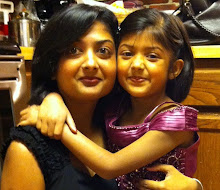Last week, when I heard about the Vonage World plan, I was pretty sure there is a catch. I call up the customer service and repeatedly ask the same question. Is there any hidden charge? She ended up laughing at me and assured me there was none. Then I make my first call. As soon as I finish with it, I go online, log in to my account to see if there was any charge. And there was none. Yippieeee!!! I am screaming. I call Jignesh and let him know. Liberation! Liberation! Liberation from those torturous calling cards and access numbers and pin numbers and lets not forget the pressure of the 'n' cents/minute. I have been enjoying this thoroughly as I pick one cousin or a friend every day and eat their brains.
Technology has come a longggggggg way. From letter-carrying pigeons to writing letters to making 'trunk' calls (I wonder why they were called trunk calls. Does anyone know why?) to making ISD calls to calling cards to VOIP phones offering unlimited calling at a very very reasonable charge/month. How does VOIP work, I have no clue. Jignesh has tried to explain it to me, but it goes right above my head. I can be plain dumb sometimes. And moreover, I really don't even want to break my head trying to decipher the server and internet highway lingo. As far as I am concerned, I am free now. I can call anywhere.....ok, almost anywhere in the world and that too unlimited. Technology rocks!!! and with it, so do I. By which I mean I am doing my happy dance. :) Helllllllloooooooooo India.

5 comments:
Trunk call...we had this in 2nd year of engineering.
Trunking in telephony is an communications systems which can provide network access to many clients/customers by sharing a set of lines (more than 1) or frequencies instead of providing them individually. Similar to the structure of a tree with one trunk and many branches!!! And fast forward to modern technologies there is PBX and EPABX and so on...
waiting for ur call
Hey taking of eating some brains out.. i was kinda overflowing with some extra brains... just wondering when u'd call next and eat them up.. lol.... keep blogging.. u r doing a good job.....
Two telecom switches are connected by means of what is known as trunkgroup. A trunk is one of the channel in a trunkgrp. Lets say you have a huge pipe passing water from texas to virginia. Now imagine this huge pipe is made up of smaller pipes from within, like a bundle of pipes clubbed together. So one of those single pipe in the bundle would be a trunk. Previously for one end to end call, they would use one trunk. That would be analogous to say one pipe from texas water department passing water to virginia water dept. Hence term Trunk call.
Now about VOIP...voice over Internet protocol....This is my everyday job...so I should get this right...when you browse or send email, your PC will pack everything up and make a packet and send it via a system to the internet (which is group of machines managed by different carriers, organisations like comcast, aT&T etc). Traditional phones had wires running from the phone company to your house. So in India the MTNL wala will come over and fix the phone at your house. They have physical wire running from their company to your house and finally to the phone. So when you are calling some one, technically speaking everyone is connected end to end by the piece of wire managed by the phone company. That is traditional phone. So when internet was discovered, people said when PCs can package all the text, pictures and videos and send it over internet, why don't we do the same with voice. thats how VOIP started. So instead of connecting the phone to the phone company's wire, you connect the phone to the internet using that vonage wala box that they sent you. The box will package voice like the way PC does and send it over the internet. Vonage ka servers will receive them and send it to the correct customer and two people will get connected.
Post a Comment